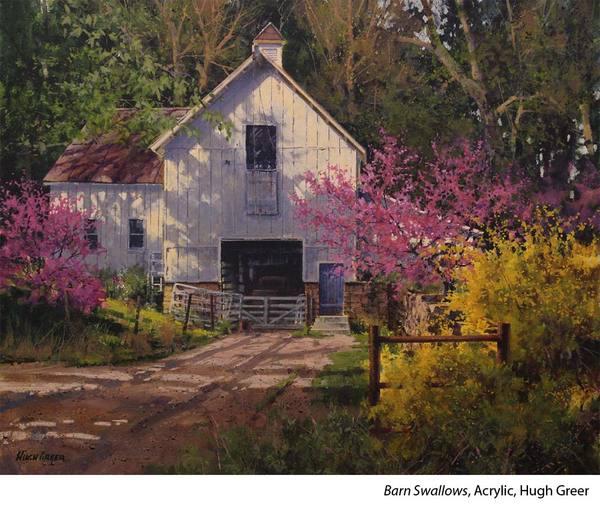“When I see a landscape that speaks to me,” says Hugh Greer, “it becomes my opportunity to share its beauty with others who will relate to it. Hopefully it will give the viewer something they can identify with in a pleasant and positive way.

My Acrylic Painting Process
1. First, the landscape has to contain elements that stir my imagination.
2. I identify exactly what attracts me to the scene: light, composition, colors?
3. I study the lights and darks (values).
4. I develop a sketch and lay out the perspective (including the horizon line & vanishing points) to ensure a strong composition.

“Before I start painting, I try to decide where I want the most emphasis (usually the center of interest) and whether to do that with line, color, or light. Sometimes, as the painting progresses, it develops its own personality, and I just go with it.”

Critiquing My Own Work
“If something doesn’t seem quite right, I generally turn the painting upside-down, look at it in a mirror, and finally view it in low light. Usually the “problem” sticks out like a sore thumb. It could be the composition, center of interest, or a value problem. When it finally looks finished to me, I have to ask: Have I created a painting that will be enjoyed enough by the viewer to buy it?”

Hugh Greer demonstrates the flexibility of acrylic, combining thin, transparent washes with opaque foreground elements and intricate line work in Hugh Greer: Landscape Studies In Acrylic.







